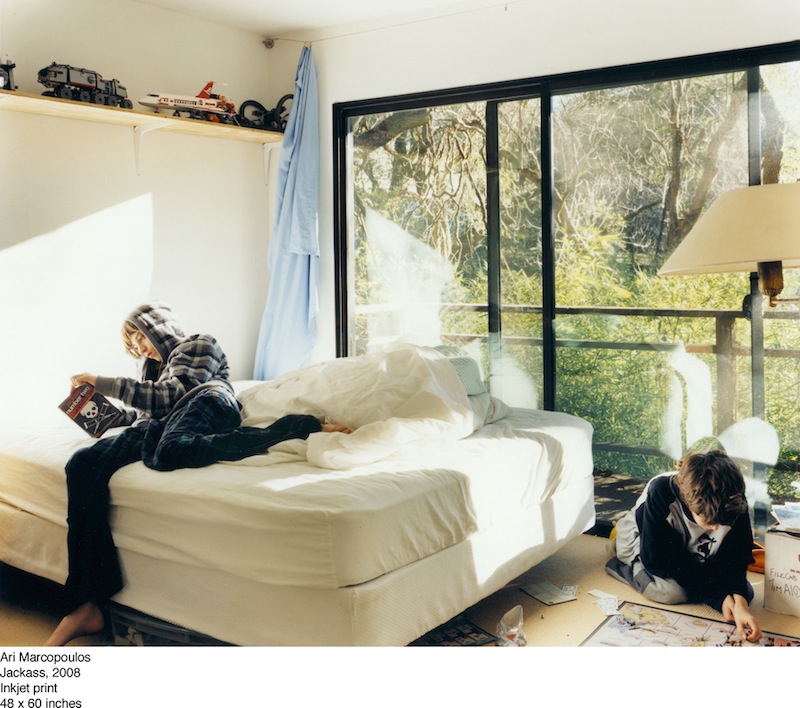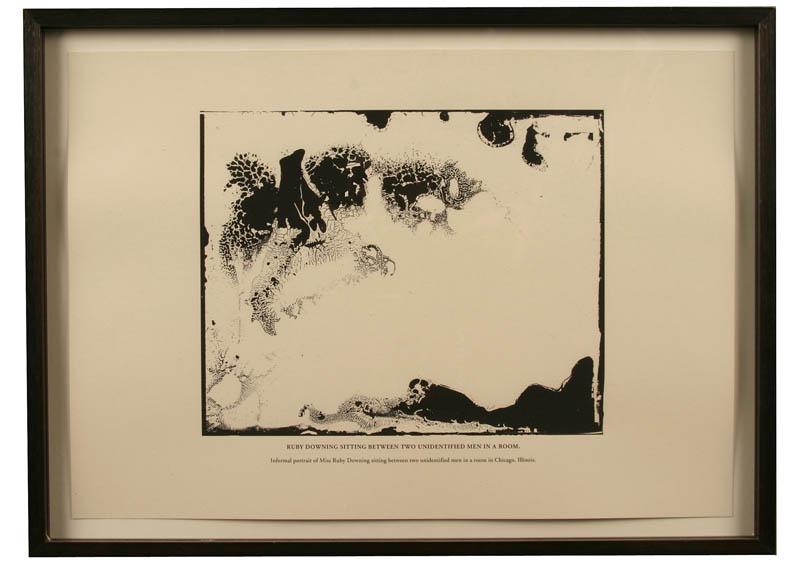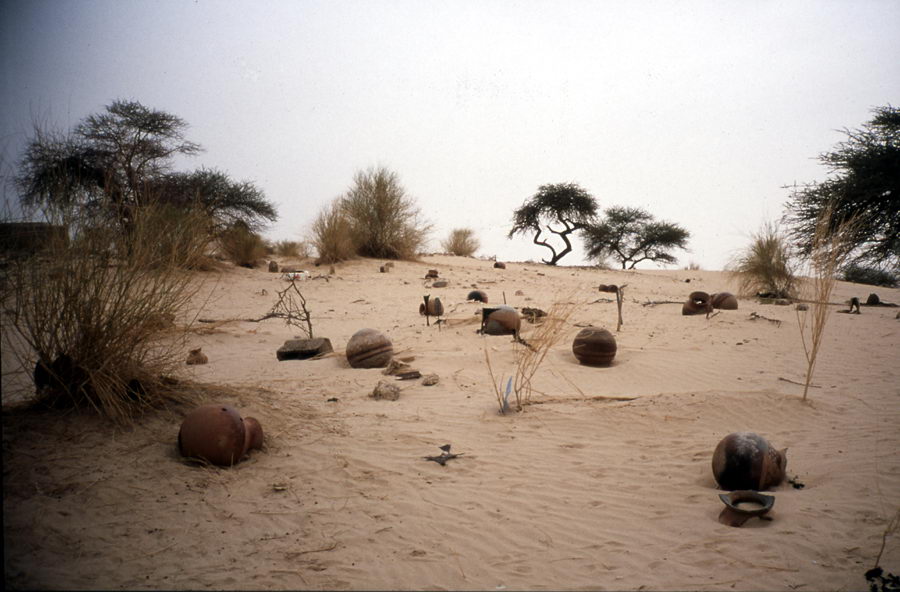Cemetery #1
2002 - Photography (Photography)
40,6 x 50,8 cm
Gabriel Orozco
Gabriel Orozco comments: “In the exhibition [Documenta 11, Kassel, 2002], I tried to connect with the photographs I took in Mali in July. I traveled to Mali for three weeks and took some photographs related to my work. They are very different, but there are links as the graveyard of Timbuktu, which I discovered during the trip. I found the cemetery because I was interested in pottery and ceramics. Research traditions of ceramics were the reason for my trip to Africa in Mali, to understand, learn, appreciate what they did, because it is an important tradition in Mali. And then I discovered the cemetery in Timbuktu. It is interesting to see how the work will take you to discover places you would never have discovered if you did not work. So the link between what you do and what you find in a second time is very interesting. In this context, the exhibition presents one hand tables with ceramics. In addition, photographs of Mali are on the walls. There is no direct link. But it is obvious that the same person who is interested in these things. And there are many reasons for this.
Gabriel Orozco could be described as a traveler-artist, without a fixed studio. He works following contexts and produces work that flows. “Special Service” (1997) is a collage on a plane ticket, and indicates nomadism, between territories. The artist, who is the son of muralist Mario Orozco Riviera, questions the boundaries of his artistic identity in Mexico. In “Crazy tourist” (1991), Orozco creates a situation with oranges in the Brazilian market tables in a desert. The artist uses objects or “poor” situations, found in the everyday landscape, natural or urban. By their division, their juxtaposition, or collage, inventing semantic or sensitive scenarios, always surprising, sometimes humorous and sometimes lyrical … The sculptural practice of the artist, inseparable from his drawings, photographs, or films, invents relationships of space, and disrupts our perception of objects. Such is the case of “Yielding Stone” (1992), a photo of a plasticine ball, the weight of the artist, rolled through the streets of New York. Gabriel Orozco was born in 1962 in Jalapa, Mexico. He lives and works in New York, Mexico, and Paris.
Colors:
Related works from the » 2000's created around » New York City, Paris

© » KADIST
Charwei Tsai
2008Charwai Tsai’s photograph documents her Hermit Crab Project installation upon the construction site of gallery Sora in Tokyo...

© » KADIST
Minerva Cuevas
2006During her research on primitive currencies and cultural cannibalism, Cuevas came across the Donald Duck comic book issue “The Stone Money Mystery,” where Donald goes on a quest to find missing museum objects...

© » KADIST
Mario Garcia Torres
2004Mario Garcia Torres imagines cinematic devices to replay stories occasionally forgotten by Conceptual art...

© » KADIST
Kara Walker
2005In her masterpiece 8 Possible Beginnings or The Creation of African-America , Walker unravels just that, the story of struggle, oppression, escape and the complexities of power dynamics in the history following slave trade in America...

© » KADIST
Mario Garcia Torres
2005Mario Garcia Torres films a game of Charades among professional actors guessing the former North Korean dictator’s favorite Hollywood films...

© » KADIST
Trisha Donnelly
2007Untitled is a black-and-white photograph of a wave just before it breaks as seen from the distance of an overlook...

© » KADIST
Ari Marcopoulos
2008In Jackass (2008) by Ari Marcopoulos, his two sons, Cairo and Ethan, are pictured relaxing in a disheveled bedroom in their Sonoma home...

© » KADIST
Francis Alÿs
2004The Nightwatch , which is an ironic reference to the celebrated painting by Rembrandt, follows the course of a fox wandering among the celebrated collections of the National Portrait Gallery in London...

© » KADIST
Lisa Oppenheim
2003The Damaged series by Lisa Oppenheim takes a series of selected photographs from the Chicago Daily News (1902 – 1933) as its source material...

© » KADIST
James Welling
2006Welling employs simple materials like crumpled aluminum foil, wrinkled fabric and pastry dough and directly exposes them as photograms, playing with the image in the process of revealing it...

© » KADIST
James Welling
2005#17 Pink is a photogram, a photographic image produced without the use of a camera...

© » KADIST
Lisa Oppenheim
2003The Damaged series by Lisa Oppenheim takes a series of selected photographs from the Chicago Daily News (1902 – 1933) as its source material...

© » KADIST
Gregory Crewdson
2005Forest Gathering N.2 is part of the series of photographs Beneath the Roses (2003-2005) where anonymous townscapes, forest clearings and broad, desolate streets are revealed as sites of mystery and wonder; similarly, ostensibly banal interiors become the staging grounds for strange human scenarios...

© » KADIST
Glenn Ligon
2000Glenn Ligon’s diptych, Condition Repor t is comprised of two side-by-side prints...

© » KADIST
Francis Alÿs
2006This series of small drawings is executed with varying materials—pen, ink, colored pencil, charcoal, and masking tape—on architect’s tracing paper...

© » KADIST
Lisa Oppenheim
2003The Damaged series by Lisa Oppenheim takes a series of selected photographs from the Chicago Daily News (1902 – 1933) as its source material...




